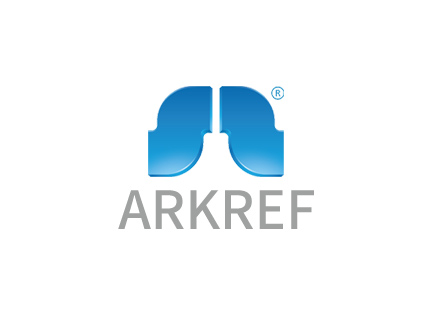Plate Belt Freezer Uses in Food Industry

Plate Belt Freezers play a crucial role in the food processing industry. These freezers utilize metal plates to rapidly freeze food products, ensuring efficient heat exchange. Their primary use involves quick-freezing high-moisture foods like seafood, meat, and ready-to-eat meals. This technology not only preserves the nutritional content and taste of food but also prevents bacterial growth. The automated nature of these freezers enhances operational efficiency, making them indispensable for industries requiring large-scale freezing solutions.
Understanding Plate Belt Freezer Technology

How Plate Belt Freezers Work
Plate belt freezers operate by utilizing a series of metal plates that come into direct contact with the food products. This contact ensures rapid heat transfer, which is crucial for quick freezing. The process begins with the placement of food items on a conveyor belt that moves through the freezer. As the belt progresses, the food comes into contact with the cold plates, which are cooled by a refrigerant circulating within them. This method allows for efficient and uniform freezing, preserving the quality and nutritional value of the food.
The Plate Quick Freezing Technology plays a significant role in this process. It enables food to reach freezing temperatures swiftly, thereby preventing the growth of bacteria and microorganisms. This technology is particularly beneficial for high-moisture foods such as seafood and meat, ensuring they retain their taste and texture.
Types of Plate Belt Freezers
Several types of plate belt freezers cater to different needs within the food industry:
Horizontal Plate Freezers: These freezers are popular due to their versatility. They handle a wide range of products, including seafood, poultry, and ready-to-eat meals. Their horizontal design facilitates easy loading and unloading, making them ideal for high-volume production environments.
Vertical Plate Freezers: Industries that prioritize maximizing freezer capacity often choose vertical plate freezers. Their vertical loading system and rapid freezing capabilities maintain product integrity during storage and transportation.
Tunnel Plate Freezers: These freezers use a continuous belt system to move products through an insulated tunnel. Cold air circulates within the tunnel, ensuring even freezing. Tunnel plate freezers are efficient for bulk operations, offering a balance between throughput and freezing quality.
Spiral Plate Freezers: Ideal for products requiring uniform freezing, spiral plate freezers provide continuous freezing capabilities. They are commonly used in the frozen dessert and bakery industries, where maintaining product shape is essential.
Each type of plate belt freezer offers unique advantages, allowing food manufacturers to select the most suitable option based on their specific requirements. The Plate Belt Tunnel Freezer, for instance, features a solid stainless-steel segmented conveyor belt, which enhances product yield by minimizing loss during freezing.
Applications in the Food Industry
Freezing Seafood
Plate Belt Freezers have revolutionized the seafood industry by providing efficient and rapid freezing solutions. Seafood, known for its high moisture content, requires quick freezing to maintain its freshness and quality. Plate Belt Freezers achieve this by ensuring direct contact between the seafood and the freezing plates, which results in faster heat exchange. This method preserves the texture and flavor of seafood, making it ideal for products like fish fillets, shrimp, and shellfish. The technology also helps in extending the shelf life of seafood, allowing it to be transported over long distances without compromising quality.
Freezing Meat Products
In the meat processing industry, Plate Belt Freezers play a vital role in maintaining product integrity. Meat products, such as steaks, burgers, and meatballs, benefit from the rapid freezing capabilities of these freezers. By quickly lowering the temperature, Plate Belt Freezers prevent the formation of large ice crystals, which can damage the cellular structure of meat. This process ensures that the meat retains its juiciness and tenderness upon thawing. Additionally, the automated nature of these freezers reduces manual handling, thereby minimizing the risk of contamination and enhancing food safety.
Freezing Ready-to-Eat Meals
The demand for ready-to-eat meals has surged, and Plate Belt Freezers have become indispensable in this sector. These freezers efficiently handle a variety of meal components, from sauces to semi-liquid products, by forming a frozen crust that makes them easy to handle. This crust formation, powered by liquid nitrogen, not only increases yield by reducing moisture loss but also maintains the meal's taste and nutritional value. Plate Belt Freezers ensure that ready-to-eat meals are frozen uniformly, preserving their quality and making them convenient for consumers who seek quick meal solutions.
Comparing Plate Belt Freezers to Other Freezing Technologies
Advantages Over Air Blast Freezers
Plate Belt Freezers offer several advantages over traditional air blast freezers. Firstly, they utilize direct contact freezing, which significantly speeds up the freezing process. This method involves placing food items directly on cold metal plates, allowing for rapid heat transfer. In contrast, air blast freezers rely on circulating cold air around the products, which can be less efficient and slower. The direct contact method not only saves time but also reduces energy consumption, making Plate Belt Freezers more cost-effective in the long run.
Moreover, Plate Belt Freezers boast a compact design, providing space-saving benefits. Their vertical configuration allows for efficient use of space, which is particularly beneficial in facilities with limited room. This design also facilitates easy loading and unloading, enhancing operational efficiency. In comparison, air blast freezers often require more space due to their bulky nature and the need for ample airflow around the products.
Benefits Compared to Cryogenic Freezers
When compared to cryogenic freezers, Plate Belt Freezers present distinct benefits. Cryogenic freezers use extremely low temperatures, achieved through the use of liquid nitrogen or carbon dioxide, to freeze products rapidly. While effective, this method can be costly due to the high price of cryogenic gases. Plate Belt Freezers, on the other hand, use refrigerants that circulate within the plates, offering a more economical solution without compromising on freezing speed.
Additionally, Plate Belt Freezers maintain product quality by preventing the formation of large ice crystals. The quick freezing process ensures that food retains its texture and nutritional value. Cryogenic freezers, although fast, can sometimes cause surface cracking or textural changes in delicate products due to the extreme cold. Plate Belt Freezers provide a balanced approach, delivering rapid freezing while preserving the integrity of the food.
Future Trends and Innovations in Plate Belt Freezing
Technological Advancements
The field of plate freezing technology is undergoing significant advancements. Dever, an expert in Plate Freezing Technology, notes that the technology continues to evolve, expanding its range of applications. Manufacturers are focusing on enhancing the efficiency and speed of Plate Belt Freezers. They are integrating advanced sensors and automation systems to optimize the freezing process. These innovations aim to reduce energy consumption while maintaining high-quality standards.
Moreover, the development of eco-friendly refrigerants is gaining momentum. These refrigerants minimize environmental impact, aligning with global sustainability goals. The integration of smart technology allows for real-time monitoring and control, ensuring precise temperature management. This level of control enhances product quality and safety, meeting the stringent demands of the food industry.
Market Growth and Opportunities
The market for Plate Belt Freezers is poised for substantial growth. As the demand for frozen foods increases, industries are seeking efficient and reliable freezing solutions. Plate Belt Freezers offer a competitive edge due to their rapid freezing capabilities and operational efficiency. They cater to a wide range of products, from seafood to ready-to-eat meals, making them versatile assets in food processing.
Emerging markets present lucrative opportunities for expansion. As these regions develop, the need for advanced food preservation technologies rises. Companies investing in Plate Belt Freezers can capitalize on this trend, tapping into new customer bases. Additionally, the push for sustainable practices drives innovation in freezer design and operation, opening avenues for environmentally conscious businesses.
In conclusion, the future of Plate Belt Freezing looks promising. Technological advancements and market dynamics create a fertile ground for growth and innovation. As industries adapt to changing consumer preferences and environmental considerations, Plate Belt Freezers will continue to play a pivotal role in the food industry.
Plate Belt Freezers significantly enhance the food industry's efficiency and product quality. They offer faster freezing times, which preserve the nutritional value and texture of food products. This technology reduces energy consumption, making it an eco-friendly choice. By maintaining high standards of food safety, these freezers prevent bacterial growth. The potential for future innovations remains vast, with advancements in automation and eco-friendly refrigerants. As demand for frozen foods rises, Plate Belt Freezers will continue to drive market growth, offering reliable solutions for diverse food processing needs.
See Also
Understanding The Pros And Cons Of Mesh Belt Freezers
Essential Tips For Quick Freezing Compressors In Food Prep
Selecting The Perfect Belt Freezer For Your Requirements

